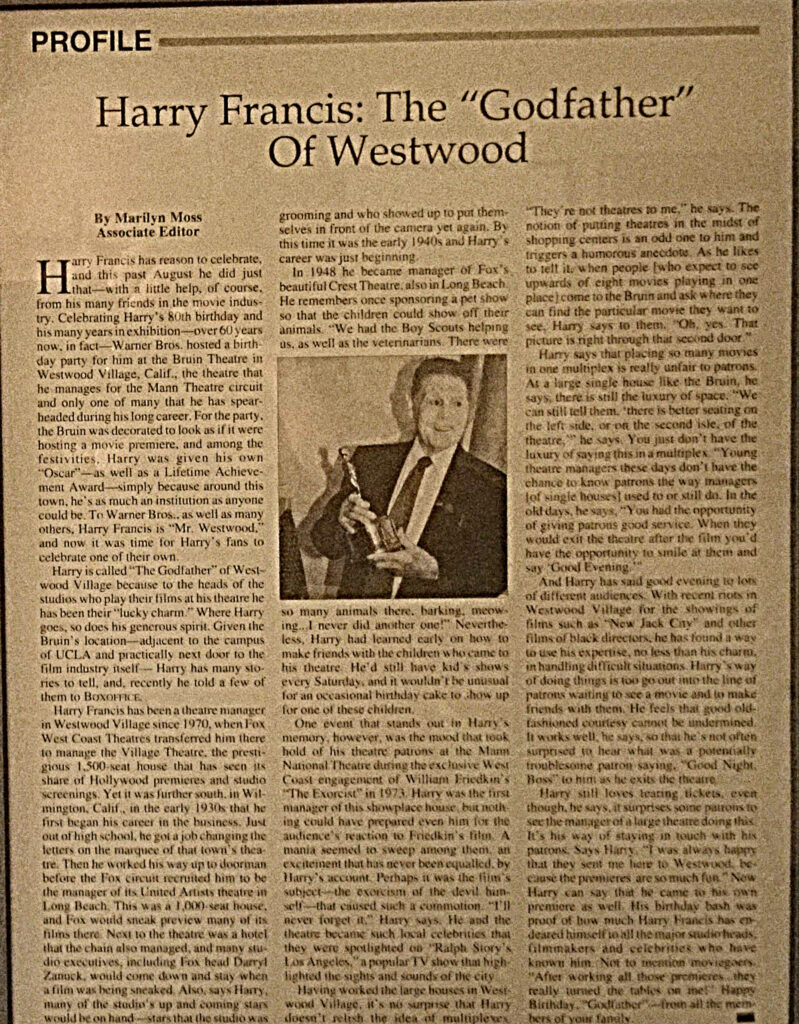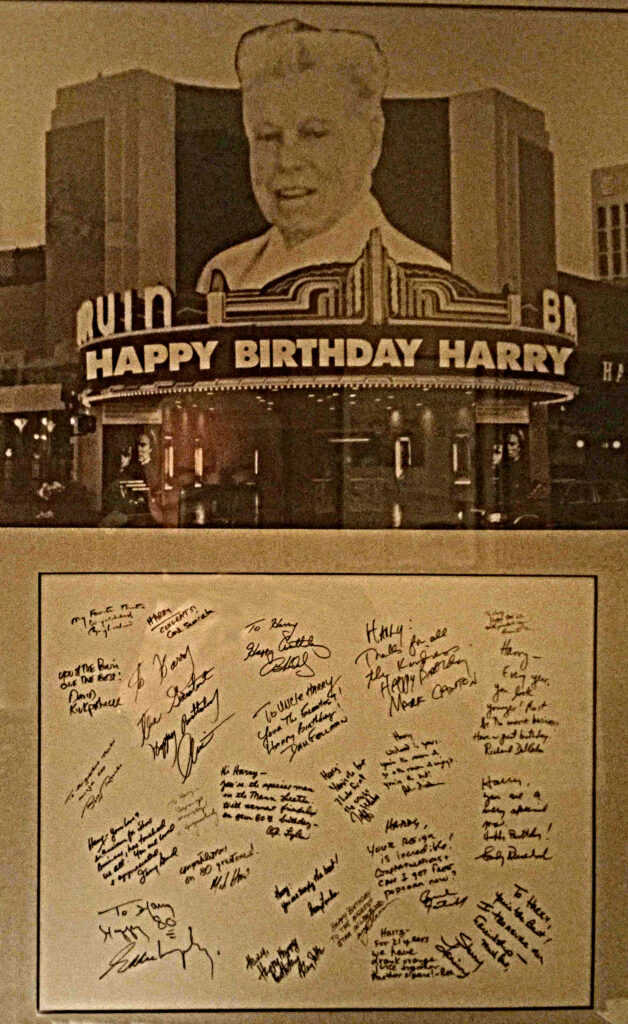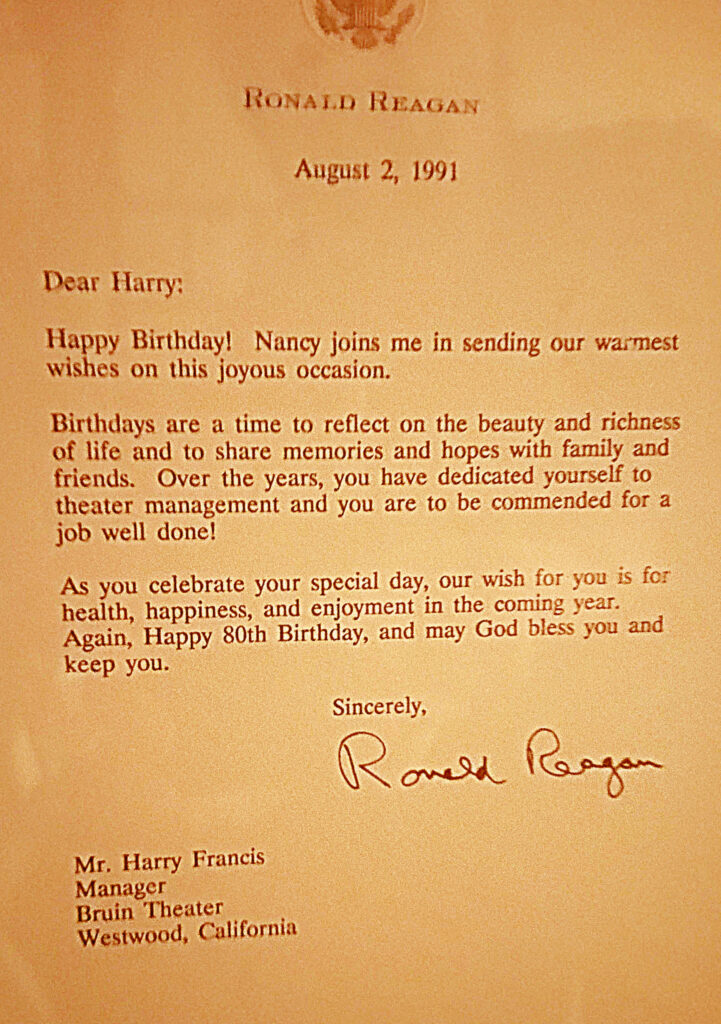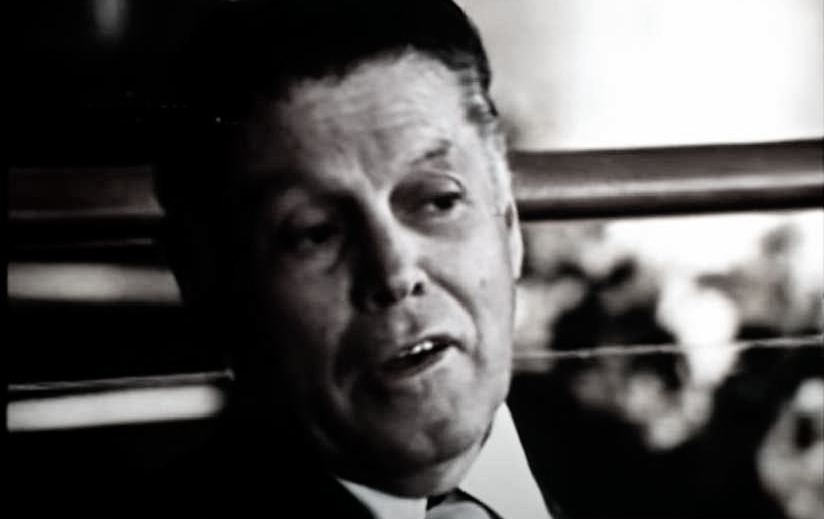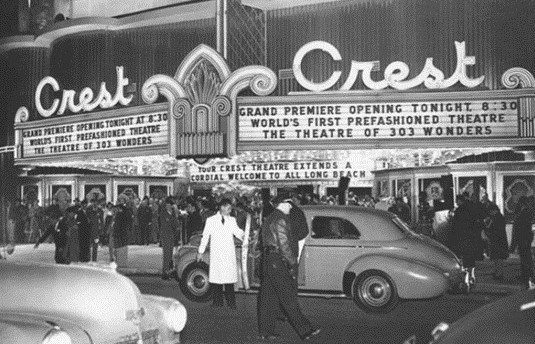
Decades before Cinergy Construction built luxury home theaters, CEO Greg Francis’ grandfather Harry Francis managed cinemas in Los Angeles. One of these, Fox West Coast Theatres’ Crest Theatre in Long Beach, was promoted as the first prefab movie palace. The Art Deco-styled stadium theater debuted in 1947, with a sneak preview of The Shocking Miss Pilgrim and a grand opening the next day showing 13 Rue Madeleine.
While industrialist Henry J. Kaiser utilized World War II engineering to build the structure, architectural designer Carl G. Moeller developed the project. Moeller’s aesthetics derived from the 1930’s movie set designs of art director Cedric Gibbons who famously created the Oscar statuette. After opening the theater, Harry managed the Crest for many years until single-screen theaters started to fall out of favor; the 1,163-seat movie palace was closed and demolished in 1978, replaced by a strip mall.
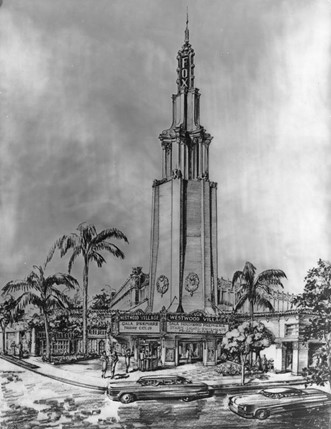
Harry started his career in the entertainment industry as a movie usher. He was born in San Luis Obispo County in 1911; his father, Henry, emigrated from England to find work in the California oil fields. His mother, Elizabeth (née Narvaiez), was a native Californian whose Chilean-born father was a farmer. Among the movie palaces that Harry managed during his fifty-year career was the Fox Theatre, Westwood Village. In 1930, Percy Parke Lewis designed the Spanish Colonial Revival Style building with an iconic 170-foot wedding cake tower and seating capacity of 1,400. Fortunately, the elegant cinema, which is a favorite for red carpet premieres, survives today as the Regency Village Theatre for future moviegoers to enjoy.
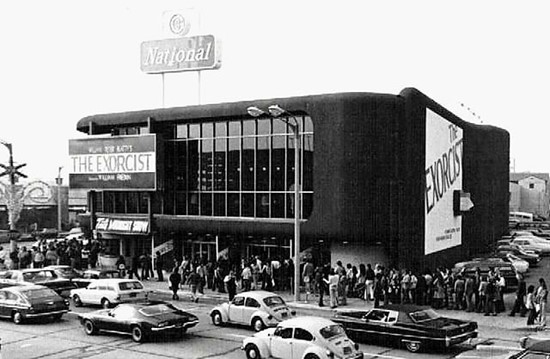
National Theatre Westwood, the last single-screen movie theater built in the United States, was Harry’s next managerial post. He opened the futuristic-looking showplace designed by Harold Levitt on March 26, 1970, with The Boys in the Band. Levitt infused the theater with 60’s glamor from the glass-enclosed foyer to the spacious lobby featuring a grand staircase backed by antique bronze mirror panels trimmed with gold molding. Modern polished brass and crystal chandeliers illuminated the way to the burnt orange auditorium with 1,112 seats. In 2008, National Theatre was a victim of the wrecking ball despite being treasured by cinephiles.

The Bruin in Westwood Village, across from the Fox Theatre, was Harry’s last theater. Celebrated architect S. Charles Lee designed the Art Moderne cinema, which opened in 1936 with 876 seats. Named after the mascot of nearby UCLA, the theater’s distinctive circular wrap-around neon marquee acts as a beacon for moviegoers. Not only is this a place to see movies, but the Bruin appears in films, including John Frankenheimer’s The Young Stranger, Hall Bartlett’s The Caretakers, Paul Schrader’s American Gigolo, Vernon Zimmerman’s Fade to Black, and Quentin Tarantino’s epic Once Upon a Time…in Hollywood. The building was designated a Los Angeles Historic-Cultural Monument in 1988.
“I’ve always loved movies and movie theaters from a very young age,” says Greg. “My brother and I had the run of the place in my grandfather’s theaters. We could go anywhere, sit in any seats, and watch whatever was playing. We could have all the candy we wanted, too, as long as we swept up between movie screenings. We watched movies over and over; I think we watched ‘Death on the Nile’ twenty times. It was really cool to run around in these magical spaces and go back and forth between the beautiful public areas and what was behind the scenes; the snack bar, the stage, even the projector room.”
Greg and his brother even got to see actors and other celebrities during those days; they came to openings and they knew his grandfather. Movie theaters were truly places of elegance and prestige back then.
Greg loves creating the same beauty and magic in the custom theaters that Cinergy builds in Los Angeles and Northern California, and making them even better than the past in audio/video quality, noise isolation, and seating luxury. “I always get a thrill out of building theaters and creating some of the magic of the old movie theaters once again,” he says. “Some of the theaters we build even remind me of the places of my memories.”
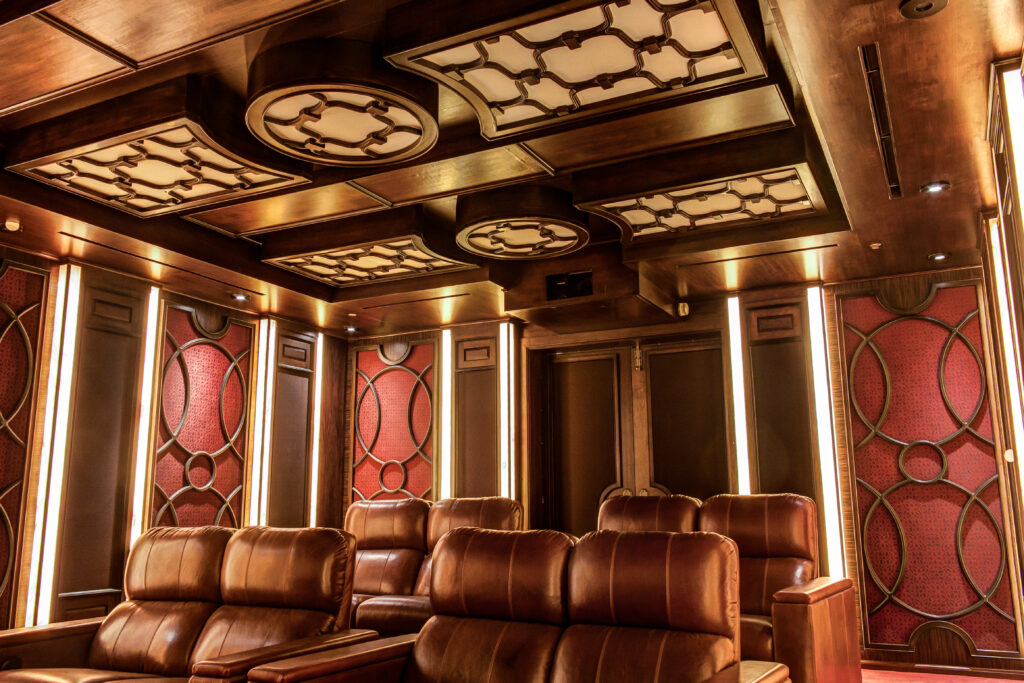
Greg’s raison d’etre for building theaters was truly realized when Cinergy built a theater on the ARRAY Creative Campus for Ava DuVernay a few years back. Ava named that theater The Amanda to honor her late aunt, Denise Amanda Sexton who fostered Ava’s love of cinema from a young age, and building the large-capacity theater with seating for 50 brought back Greg’s memories of his grandfather. On top of managing memorable theaters, Greg’s grandfather Harry also created memorable experiences for many of his most important theater patrons; children. One such moviegoer shared this memory from long ago on the website Cinema Treasures, “He loved the kids and would put on a Saturday kid’s show every week. He refused to play monster movies because he said our mothers would complain. But they always showed a film, ‘Crazy Races,’ about ten or twelve cartoons (the last one they would run upside down and backwards) and they had birthday cake for any kids who had a birthday during the week. He would stand on the stage with a microphone after the movie and give out the cake and prizes for those who had the winning number for ‘Crazy Races.’ Very fond memories.”
He received many honors for his work in theater management, including a full-page article in Boxoffice Magazine, a framed photo anointing him the “Godfather of Westwood” that was signed by dozens of movie industry notables, and, most prized, an official letter from then-President Ronald Reagan himself, wishing him a happy 80th birthday. Harry Francis passed away in 1994, but an interview at the National Theatre Westwood in the Cultural Impact of The Exorcist 1973 captures his charm and showmanship.
